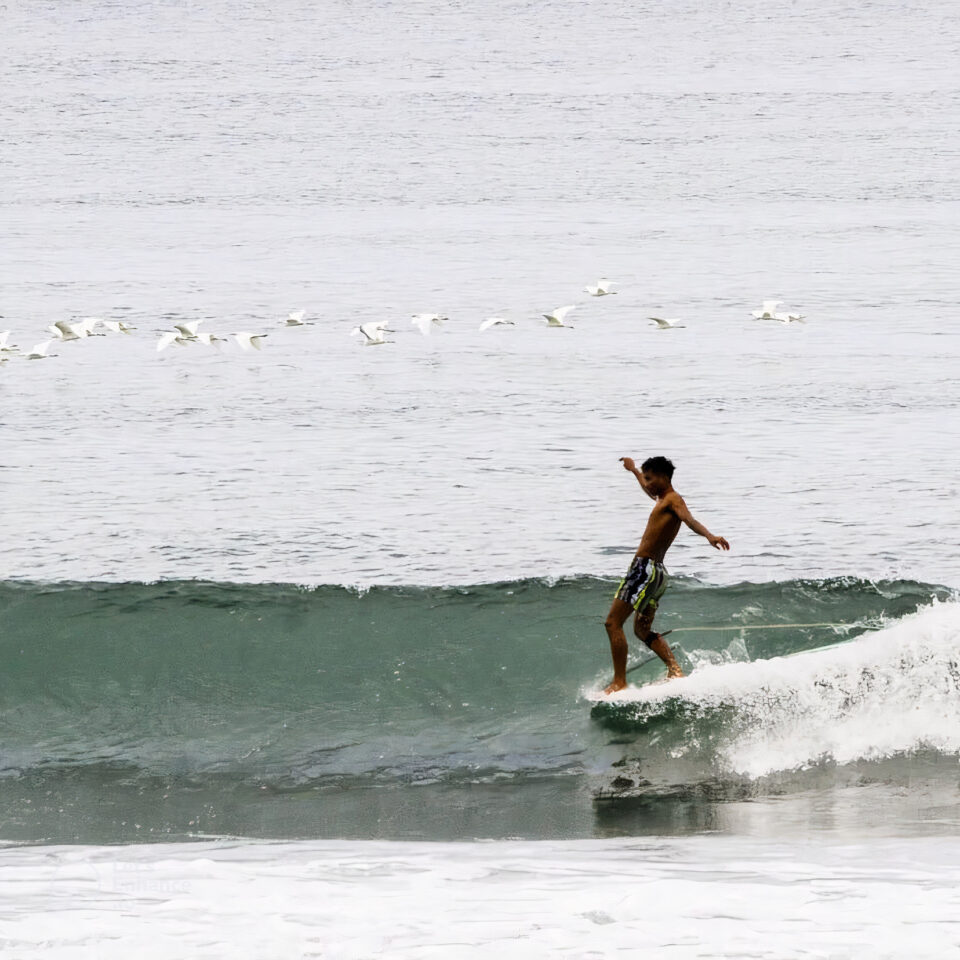World-class surfers. Quality waves. A thriving economy. A welcoming community. What’s not to love about this northern town?
SAN JUAN, LA UNION – It’s seven o’clock on a lazy April morning, and the summer heat hasn’t yet descended upon the sleepy town of San Juan, La Union. But this early, there’s already a long queue in front of El Union Coffee, one of the more popular local establishments here.
The crowd is mostly made up of out-of-towners, local tourists who are drawn to San Juan’s mystique. The coffee shop is relatively new, established only in 2013, but it represents the gradual transformation of this municipality of around 40,000 from hidden gem to popular vacation hotspot.
Up until the late 2000s, San Juan had been hiding in plain sight all these years, a little secret known only within the surfing community. It has since welcomed more casual tourists, which has spurred economic progress, but for the longest time, it served its own niche among wave enthusiasts.
“Noong pumupunta kami dito, hindi pa siya talaga commercialized,” says Mike Eijansantos, founder of My Life On Board, a media outlet dedicated to San Juan’s surfing scene and resident since 2019. “Mostly ang pinupuntahan talaga is surfing mismo. El Union wasn’t there pa, but yung owners talaga pumupunta dito. So yung mga owners ng establishments dito na based in Manila, naging based na talaga sila dito.”
Origin story
So how did this sleepy little town along the coast of La Union become a surfing haven? San Juan’s story began sometime in the 1970s, when a Japanese national named Kazou “Aki” Akinaga (more popularly known as Aki San) discovered its swell and quickly realized its surfing potential. He fell in love with the spot, never left, and today is acknowledged as the OG of San Juan surfers. He also helped grow the sport by handing down surfboards to the local community.
The surf spot’s reputation slowly grew through word of mouth, especially among expats looking for waves to ride. At the same time, no one was in a hurry to trumpet its location to the rest of the world. It remained a hidden gem.
“As far as I know, since the 1980s, may mga foreigners na talaga na pumupunta dito to surf. And iyon ang mga nauna,” Eijansantos said. “I think kasi normal din sa mga foreigners na they need to hide the gem. Kaunti din lang talaga ang mga pumupunta dito.”
Eventually, though, it was difficult to keep this a secret for much longer, especially once the local surfers started literally making waves. Chief among these were Luke Landrigan and Ronie “Poks” Esquivel.
Landrigan is the son of a Filipino mother and an Australian father, and his family has deep roots in San Juan’s surfing community. They own Seabuds, a popular restaurant in the area, and Luke himself is considered surfing royalty, having won numerous contests here and abroad in the 2000s.
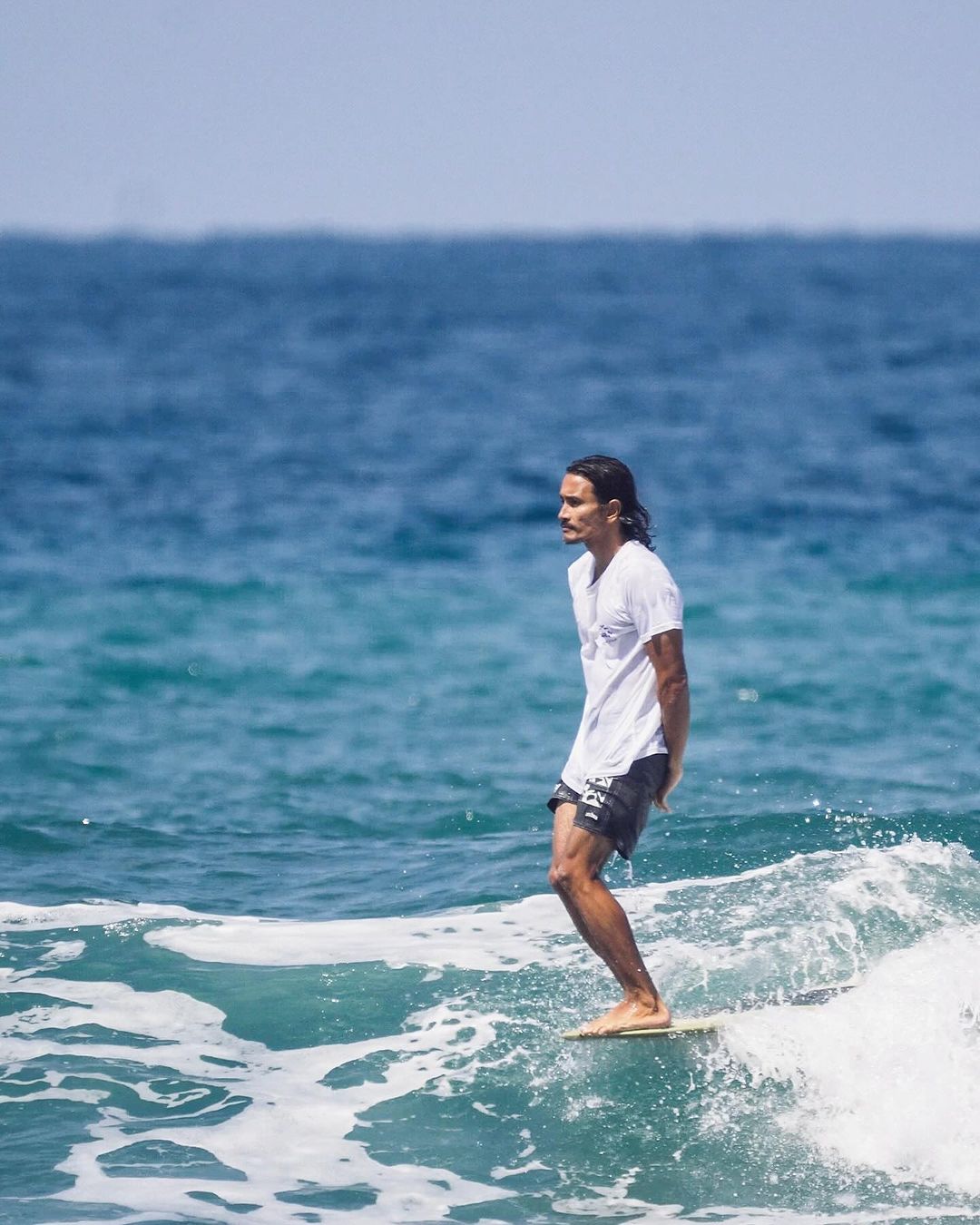
“My dad moved here in the 1980s and bought land in San Juan,” Landrigan told The GAME. “I’ve been surfing here since I was seven, eight years old. That’s about 1990, I think.”
“Luke,” Eijansantos said with a wry smile, “was our first poster boy.”
Around the same time, Esquivel became a cult hero among surfers everywhere. Born with just one leg, Poks never let his disability get in the way of dominating the waves. Such was his talent level that he was nicknamed ‘The Prince of Tides.’ Sadly, Poks died in 2012 at the age of 27 due to a heart attack, but his legacy lives on through his younger siblings.
Aside from helping manage the family business and giving surfing lessons, Landrigan now serves as a coach of San Juan’s next generation of surfers, including Poks’ younger brother Jay-R, who is now arguably the best longboard surfer in the country.
“Si Jay-R, maliit pa siya noon,” Eijansantos says of the Luke-Poks era. “Noticeable na siya because of iyong skills niya. As an Equivel, kilala din iyong brother niya, si Poks. Actually si Poks ang nagpasikat sa La Union kasi nag-compete siya sa ibang bansa kasama ni Luke.”
Longboard legends
When it comes to longboard surfing, San Juan’s surfers are unmatched. Consider that all four Filipino surfers competing in the 2024 ISA World Longboard Championship in El Salvador — Jay-R Esquivel, Roger Casugay, Daisy Valdez, and Ashlee Lopez — are from La Union.
Last year, Esquivel won the copper medal in the Men’s Grand Final, towing the Philippines to a similar finish in the team competition. These were the first medals ever won by a Philippine contingent in the history of the competition.
“Lahat ng nasa longboard ngayon, taga-La Union,” Eijansantos said. “So I think that’s a big statement, that La Union is the best producer of longboard surfers in the Philippines. Classic longboarding, doon talaga nakilala ang San Juan. Mostly mga locals dito, puro magagaling na longboarders. Na pass-on through generations. And the quality of waves. The quality of waves dito, best for longboarding.”
In the 2019 Southeast Asian Games, where surfing made its debut, Casugay and Esquivel finished 1-2 in men’s longboard, while Valdez won the bronze in women’s longboard as the Philippines collected a 2-2-3 medal haul. The surfing competition, incidentally, was held in La Union.
“Mas maganda for longboarders ang wave ng La Union,” says Dr. George Canlas, president of the UPSA-Pilipinas Surfing, the country’s surfing national sports association (NSA). “I think that’s a big factor.”
Landrigan also credits the waves.
“If you look at our surfing spot, there’s a beach break perfect for beginners. And a few hundred meters away from the beach is the point covered by reef, which is good for advanced and professional surfers.”
It also helps that the local government has thrown its full support behind the sport.
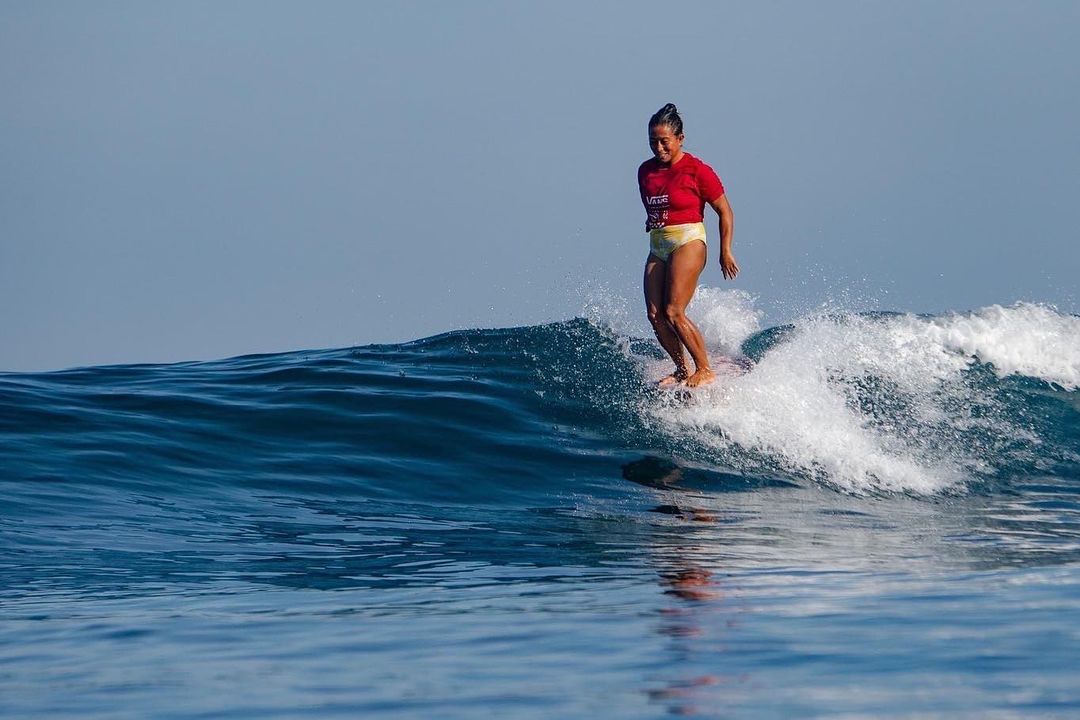
“I think the local government has a lot to do with it,” Canlas said. “The LGU and the provincial government, they support the sport very well. They’re very fair in supporting the sport. They’re not very selfish. They are more concerned with the local and developing the locals. Malaking bagay iyon, the LGU and the provincial government support.”
Surfing was scrapped in the last two SEA Games, and it is not sure to return for next year’s edition to be hosted by Thailand, but La Union’s longboarders have a bigger prize to look forward to when they vie for slots in the 2028 Los Angeles Olympics.
“As far as the chances for 2028, I think it’s very good,” Canlas said. “Jay-R is very young, even Roger. Then we have a couple of young guns. They should be peaking in around four, five years’ time. And so I’m quite confident in our chances in 2028 in LA.
“The next Asian Games in Japan (in 2026) will probably have longboard. Mado-dominate natin iyon. In the World Surf League, we always dominate longboard. We’re world class in longboard.”
Surfing town = boomtown
As we walk along the San Juan shoreline, Eijansantos points to various business establishments that the surfing industry has spawned. It’s a positive sign of the sport’s popularity that various surf schools have sprouted in recent years.
“It spurs the economy,” Mike says. “Ang laking tulong sa mga local surfers, lalo na sa mga surf school owners, na nakapagbigay sila ng trabaho sa kapwa surfers nila. At the same time, na-enjoy din nila ang ginagawa nila. So iyong mga surf schools dito, lahat ng may-ari niyan, surfing legends. Iyong mga nauna sa eksena.
“That’s Tikboy Surf School,” he said, pointing to a sign on the beach. “Tikboy is popular here. Kung surfer ka, kilala mo siya kasi siya iyong nagre-repair ng mga boards pag nasira. Itong Elyu Classic, kay Ian Saguan iyan, one of the coaches and one of the local legends dito sa La Union. Coach ni JayR iyan. Siya iyong sumama sa amin sa US.
“Surfstar naman, kay Lemon Dines. Siya yung nag-coin ng term na surf star. Kasi sabi niya, kung may rock star dapat may surf star din.”
A confluence of events contributed to turning San Juan into a boomtown. The Boracay shutdown prompted beachgoers to look for alternative vacation spots The SEA Games hosting helped further put the town on the map. Finally, San Juan’s proximity to Manila was further enhanced by the completion of the Tarlac-Pangasinan-La Union Expressway (TPLEX).
“Magandang infrastructure sa highway,” Eijansantos said. “Dati pag pumupunta kami dito, mga six to seven hours. Ngayon four hours na lang. Balita pa nga, idudugtong ang expressway dito, ang endpoint.
“Isa rin, alam ko malaking epekto rin iyong shinut down iyong Boracay. Walang mapuntahan ang local tourists from Manila, dito sila pumunta.”
Dr. Canlas concurs. “It’s easily accessible. That’s one big thing. I think the TPLEX will be ending in San Juan in a couple of years’ time. It’s really one of the first towns that adopted surfing as their motto. You can say that about Baler as well, but as far as accessibility is concerned, I think San Juan has that. You can make it in three-and-a-half hours, four hours.”
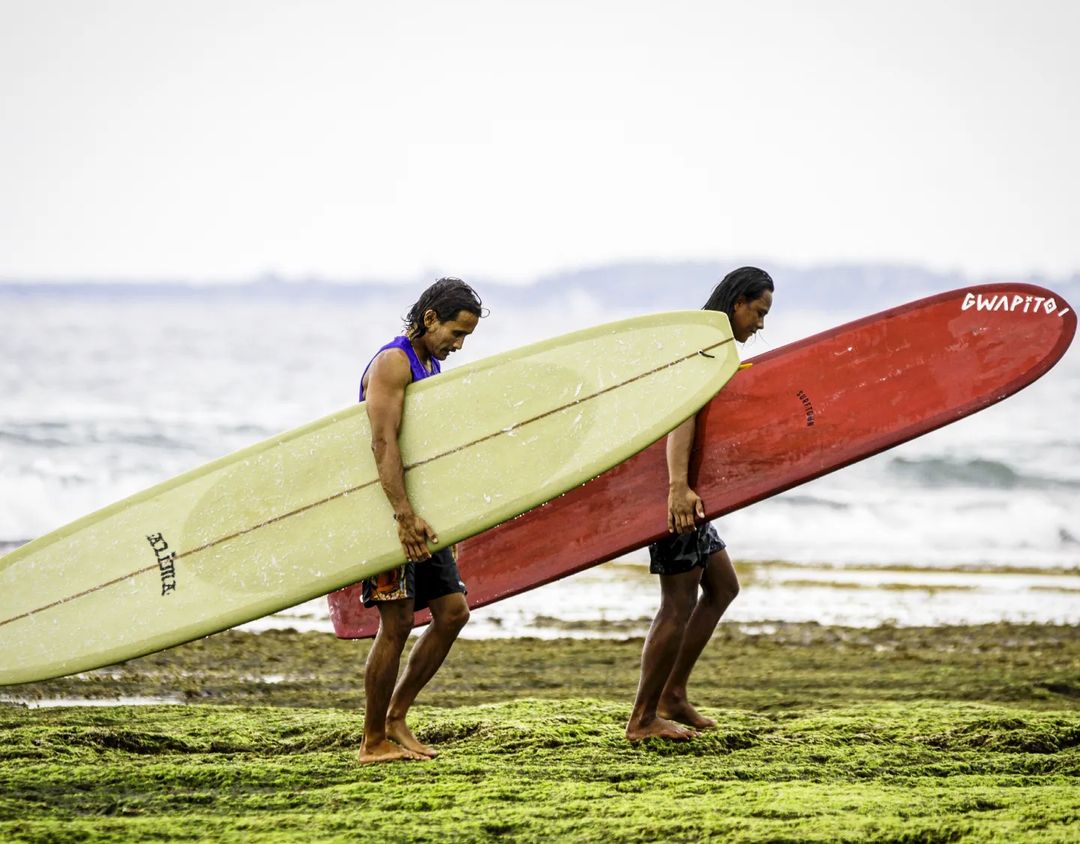
Boracay’s shutdown served as a cautionary tale on the dangers of commercialization, something the San Juan community is careful to avoid. Commercial establishments have to be a certain distance from the shoreline, no drinking is allowed on the beach, and swimming is prohibited after 6:00 p.m.
Still, there’s no denying that has become more crowded in recent years. During the most recent Holy Week, the beach was teeming with tourists.
“Actually, hindi natin maiiwasan talaga,” Eijansantos said about commercialization. “Marami nang bars, restaurants na lumalabas. In terms of overcrowding, may mga plano naman din ang local government and the LUSC (La Union Surf Club) on how to maximize and how to control lalong lalo na sa basura. Kasi siyempre ayaw naman natin mag surf sa maduming lugar, diba?”
‘There’s magic in San Juan’
Errole Gutierrez, an entrepreneur who has transplanted himself into San Juan and who helps run a local shop called Surftown La Union, was asked by The Game what makes this town so special.
His response? “There’s magic in San Juan.”
Gutierrez is just one of a growing number of city slickers who have chosen to trade in the madness of Manila’s urban blight for the serenity of San Juan’s waves.
There are many more. Former Azkals forward Nate Burkey, for instance, has also settled down here and spends his free time teaching the local kids football.
Eijansantos himself, although born and raised in nearby San Fernando, studied and worked for a while in Manila. His family would visit San Juan just to eat at Seabay. He helped out during the 2019 SEA Games and never left.
“Noong time na nasa Manila ako, ubos ang oras mo sa traffic. Dito, mabagal ang oras but at the same time, you get to spend a lot of time with family. You’re here for the quality of life. That’s what San Juan can offer.
“For us who moved here, it’s not just because of the business. It’s the lifestyle, it’s the way we chose for our family na, kung ano iyong pamumuhay ng mga locals dati, gusto namin sana ma-experience ng mga anak namin. And at the same time, makapag-surf. That’s the true magic, iyong surf dito.”
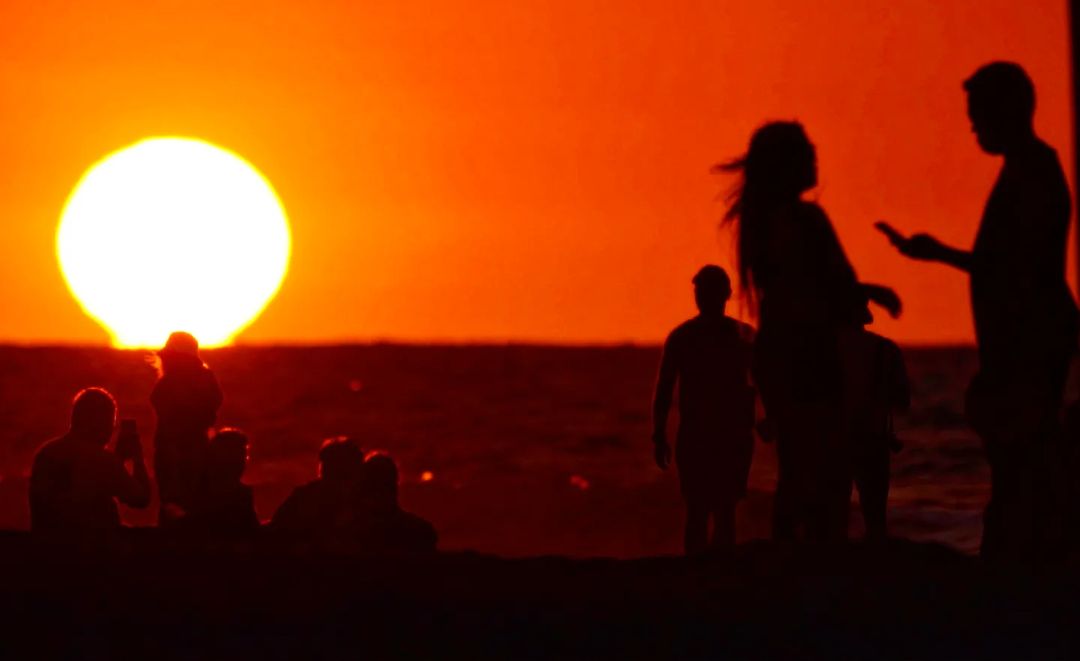
A typical day for the locals starts with a quick surf at 6:00 a.m. After breakfast, if there are still waves, another quick surf before everybody goes about their daily routine. Then late in the afternoon, they gather at the beach to observe a beautiful sunset.
When it comes to analyzing what makes San Juan magical, the locals’ hospitality cannot be overlooked.
“One thing to add is the community,” Landrigan said. “Very welcome ang mga surfers dito. The locals, the surfing instructors, and everyone who lives in the surfing town area. We’re very welcoming. Plus also there are a lot of events happening here during our season, like international events, international longboarding events, and international shortboarding events.
“Even our friends who are not from here, they also invest here and open up businesses here. I think they see it as a quick getaway from Manila.”
Having experienced the assimilation process firsthand, Eijansantos can say this with confidence:
“I think iyong pinaka-magic here is the locals’ hospitality. Once na naging part ka ng community dito at nakilala mo ang locals, and you get to mingle with them, get to share food on the table, naging part ka ng buhay nila, part ng culture nila, I think that’s the magic.”
Banner image from Mike Eijansantos on Instagram.
Related Stories:
The Rising Tide: Jay-R Esquivel Is Bringing Philippine Surfing To The World
The Philippine Beach Games And Its 2024 Edition With Founder JP Demontaño
5 Summer Sports You Need to Try to Get the Most Out of the Sun
